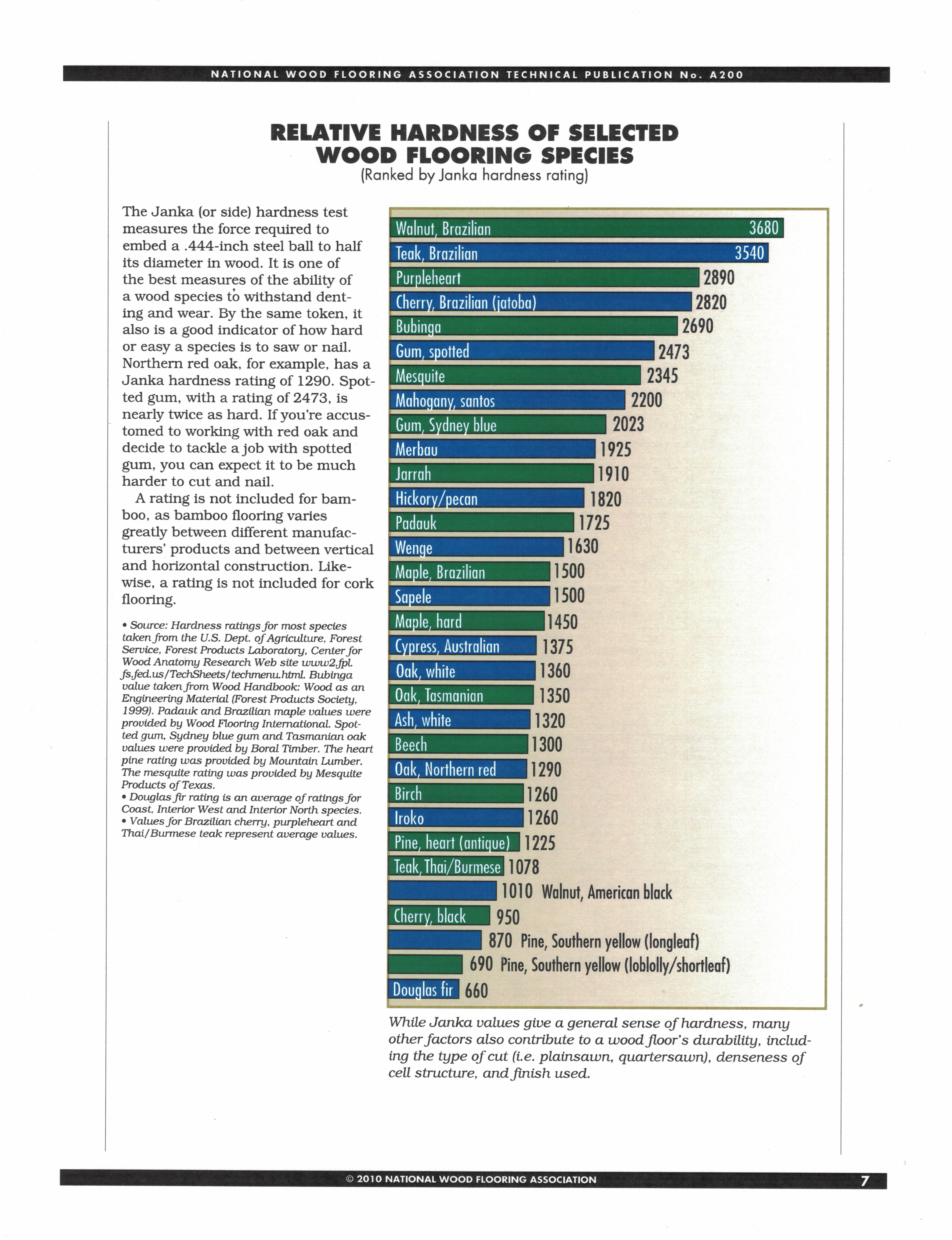
Janka Scale Musolf's Wood Flooring
The Janka wood hardness scale lists the hardness of wood species where the highest ranking makes up the hardest woods. This guide outlines 113 domestic and foreign species of wood, with their hardness scale rating. Janka Wood Hardness Scale Chart
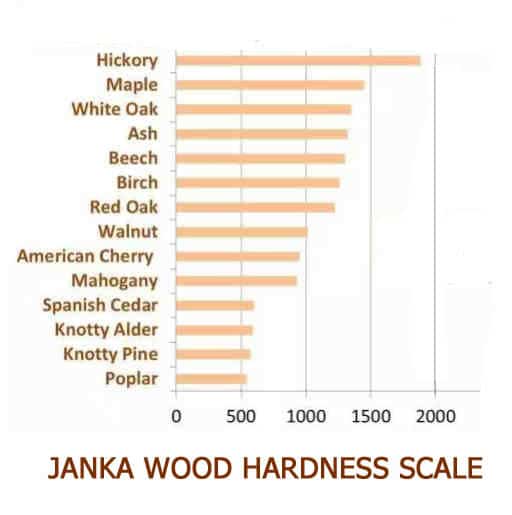
The Janka Hardness Scale Some Important Facts You Should Know
The Janka Wood Hardness Scale refers to a range of numbers that determine how dense a type of wood is and how resistant to dents, dings, and wear that a type of wood will be once installed. Ipe - 3510 Wallaba - 2040 Hickory - 1820 Hard Maple - 1450 French White Oak - 1360 American White Oak - 1360 Antique Oak - 1325 Red Oak - 1290

Understanding the Janka Rating Scale
The Janka hardness test ( English: / ˈdʒæŋkə /; [1] German: [ˈjaŋka] ), created by Austrian-born American researcher Gabriel Janka (1864-1932), measures the resistance of a sample of wood to denting and wear [citation needed] It measures the force required to embed an 11.28-millimeter-diameter ( 7⁄16 in) steel ball halfway into a sample of wood.
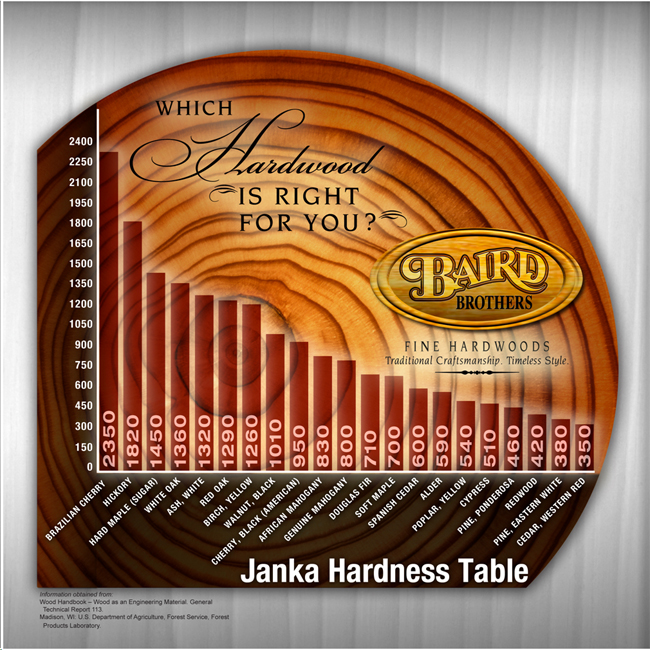
Janka Hardness Scale Learn How Hard Each Wood Species Is
The Janka Test is a measure of the hardness of wood. The Janka Test was developed as a variation of the Brinell hardness test. The test measures the force required to push a steel ball with a diameter of 11.28 millimeters (0.444 inches) into the wood to a depth of half the ball's diameter.
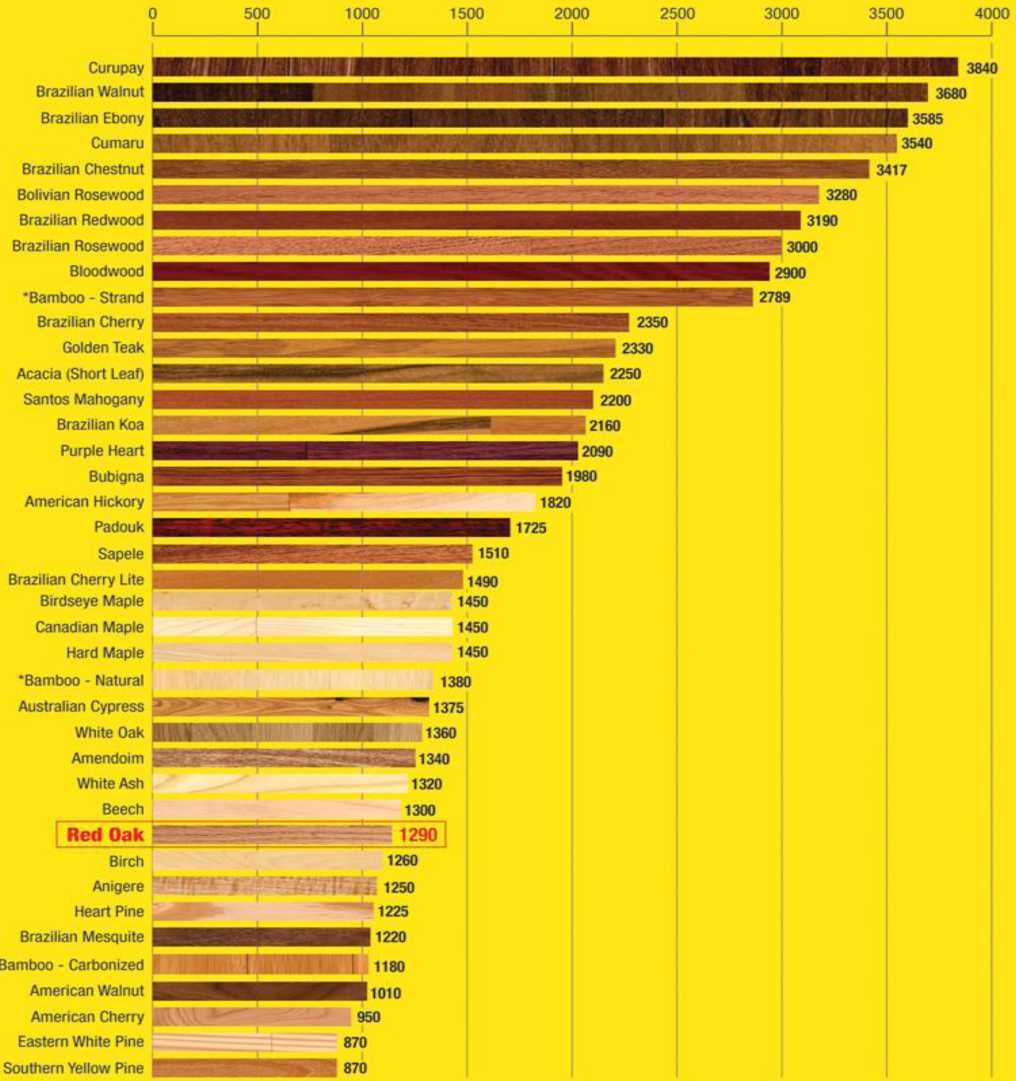
Janka Hardness Test What is a Wood Janka Rating? LL Flooring
Hardness, or "JANKA VALUE" is measured with a test of resistance of a sample of wood to denting and wear. It measures the force required to embed an 11.28mm (.444 in) steel ball into wood to half the ball's diameter leaving an indentation in the wood. JANKA VALUES SOFTER WOOD HARDER WOOD SPECIES 0
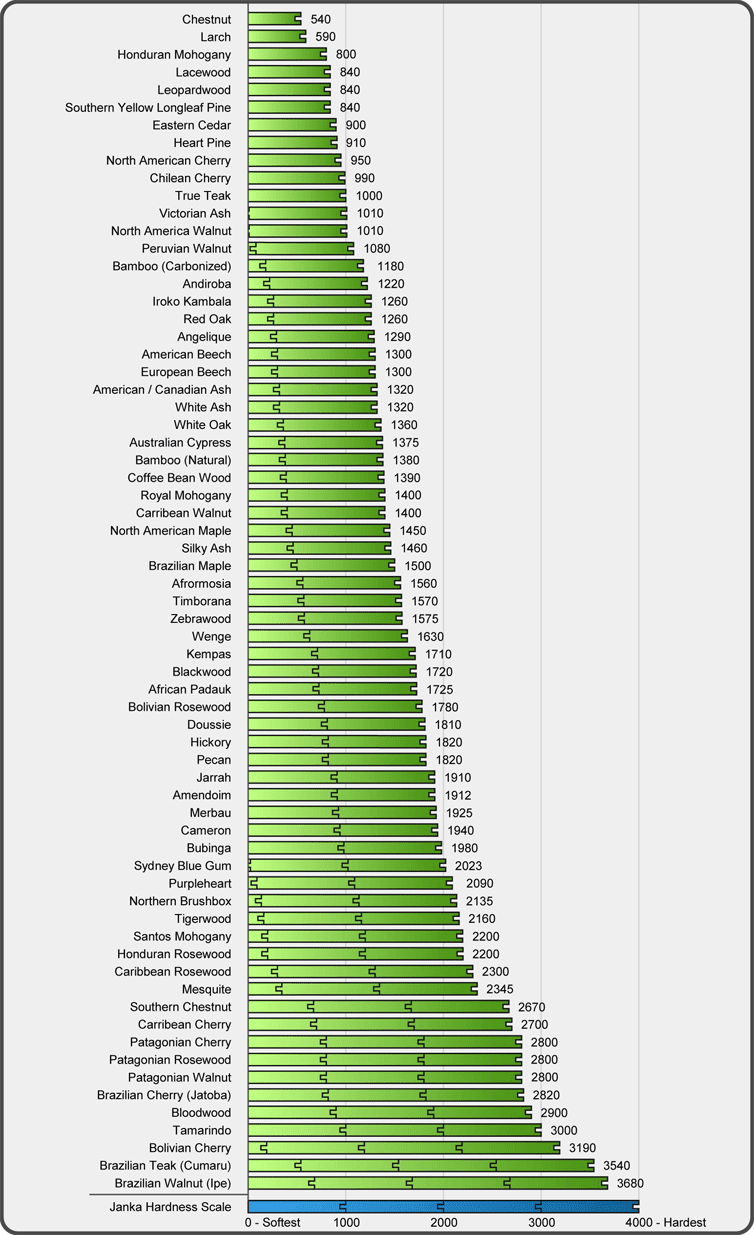
What is Janka Hardness Rating? Pinnacle Floors
The Janka scale is a helpful tool for comparing various types of hardwood floors. This page will comprehensively break down how this wood hardness scale works and what makes bamboo & eucalyptus floors so sturdy. Strand woven bamboo flooring, on average, has Janka ratings upwards of 3,800, which is much higher than traditional wood flooring.
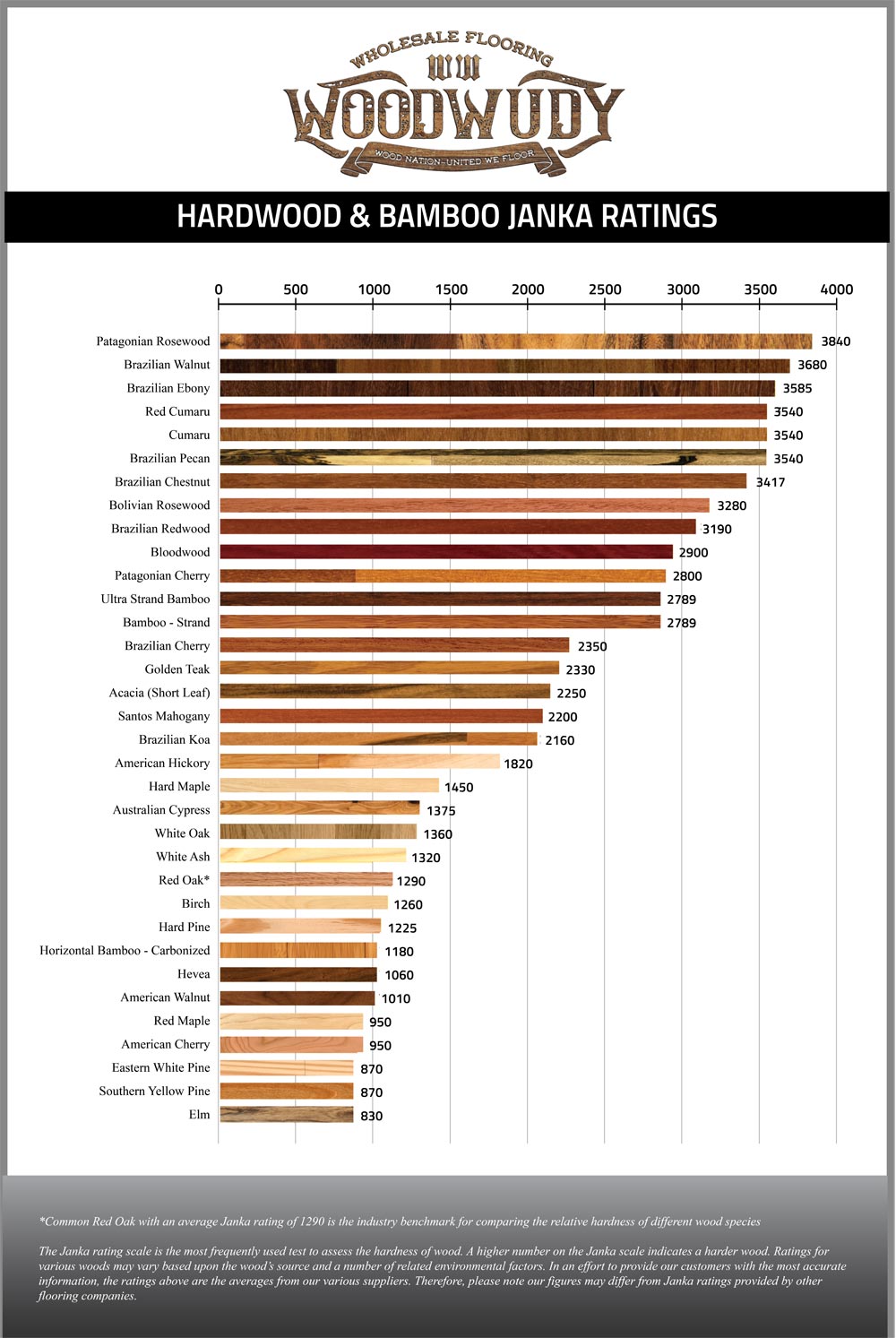
The Janka Wood Hardness Scale Woodwudy Wholesale Flooring
Janka Hardness Ratings of Wood Species It is important to remember that the testing process used in the Janka scale is an impact test, not a test of scratching, scuffing, or any other wear and tear that flooring experiences. To learn the basic hardness of different common woods used in flooring, check the chart below.
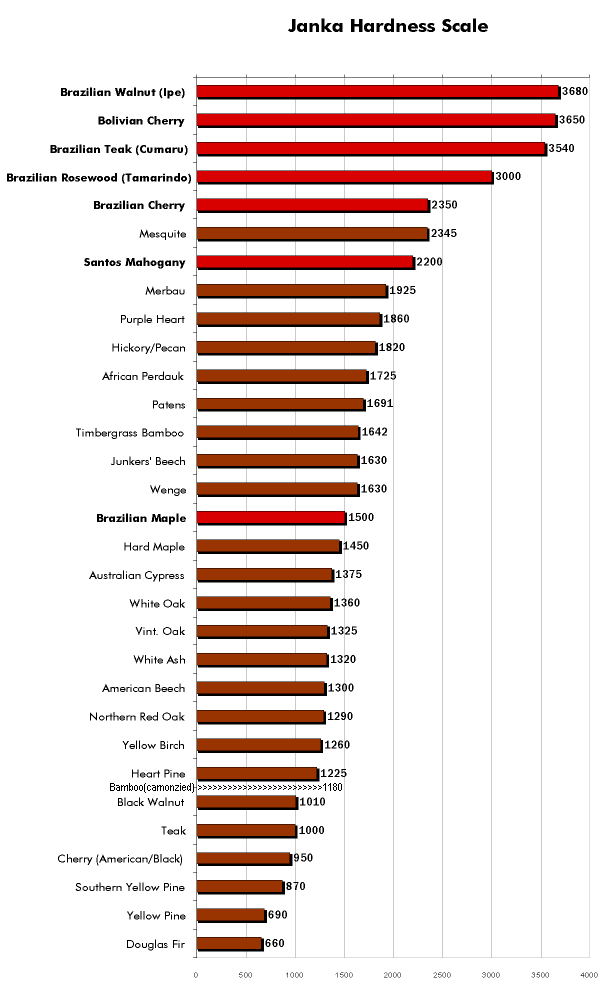
Hardwood Flooring and Understanding the Janka Hardness Scale
The Janka Hardness Scale determines the hardness of a particular type of wood over another. The scale was invented in 1906 by Gabriel Janka, an Austrian wood researcher, and standardized in 1927 by the American Society for Testing and Materials (ASTM).
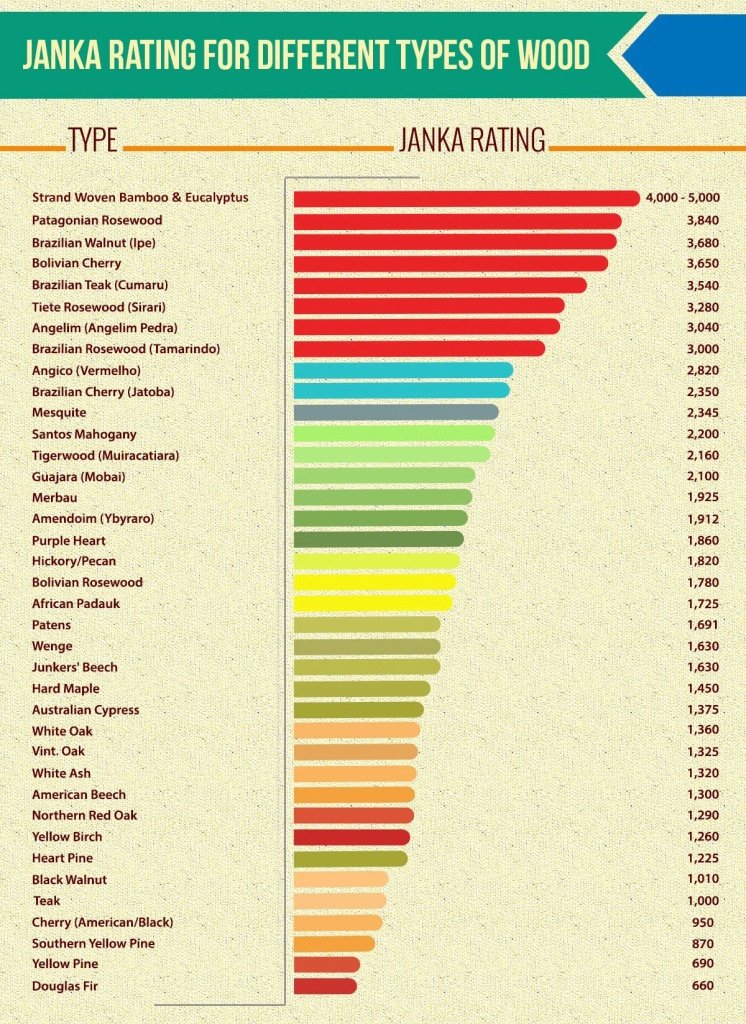
Janka Scale Hardwood Flooring Hardness Guide
The Janka scale is used to determine the relative hardness of particular domestic or exotic wood species. The Janka test measures the amount of force required to embed a 0.444" steel ball into the wood to half of its diameter. Woods with a higher rating are harder than woods with a lower rating. The scale used in the table is pounds-force.

Janka Hardness Test for Hardwoods Home Tips for Women
As such, it is recommended to use the Janka scale in combination with other tests and evaluations when making decisions about the suitability of wood for different applications. Overall, the Janka hardness scale is a valuable tool for determining the hardness and durability of various types of wood and is widely used by lumber suppliers.
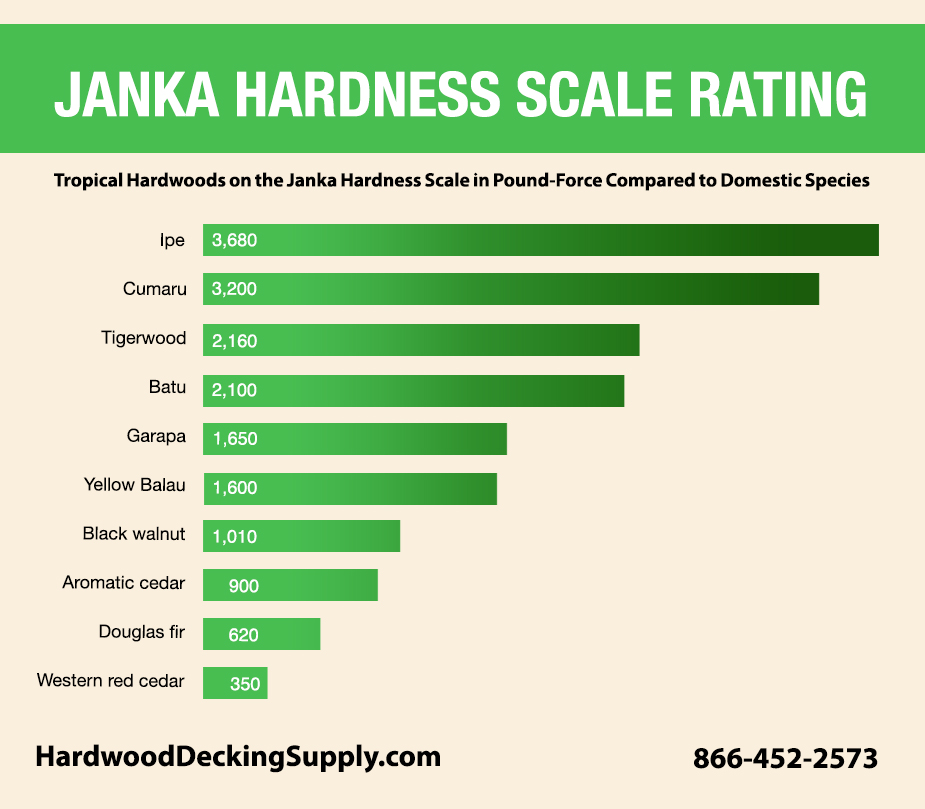
What is the Janka Hardness Scale? Hardwood Decking Supply
The industry standard method for determining the hardness of wood products is called the Janka hardness test. Janka hardness of a given wood species is defined by a resistance to indentation test as measured by the load (pounds of pressure) required to embed a 11.28mm or 0.444" diameter ball to one-half its diameter into the wood.
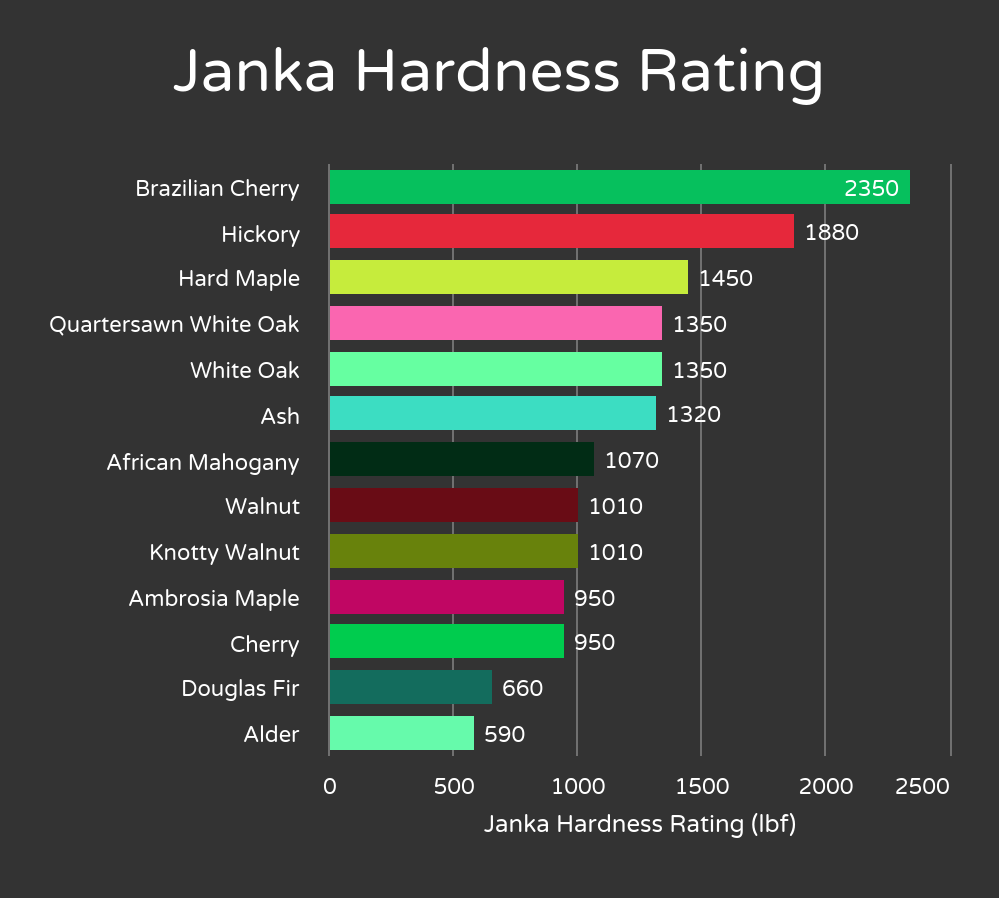
Janka Hardness Scale for Woods
Janka Scale - Learn about the the process of rating wood densities and hardness including comparative ratings of common Indiana Hardwoods and Softwoods.
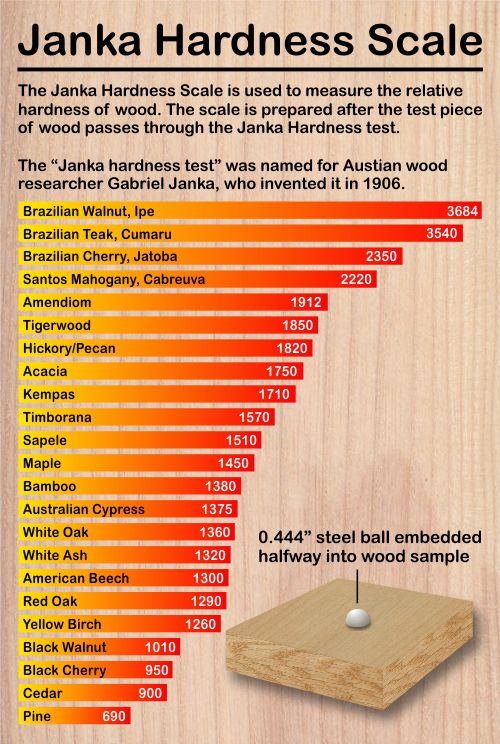
A Homeowner's Guide to Hardwood Floor Hardness Flooring Products
The Janka hardness scale is a measure of the hardness of a given species of wood and its level of durability. It is named after its inventor, an Austrian wood researcher named Gabriel Janka which was standardized in 1922. The Janka hardness test is a variation or adaptation of the Brinell hardness test.

Janka Hardness Scale Explained Wood Ratings) — Tyler Brown
The Janka hardness scale is a measurement that determines a wood sample's resistance to denting or wear. It was developed in 1906 by Gabriel Janka, an Austrian-born American wood researcher. His method is now accepted as the standard for ranking a wood's hardness. The results of the test are straightforward: the higher the number on the.
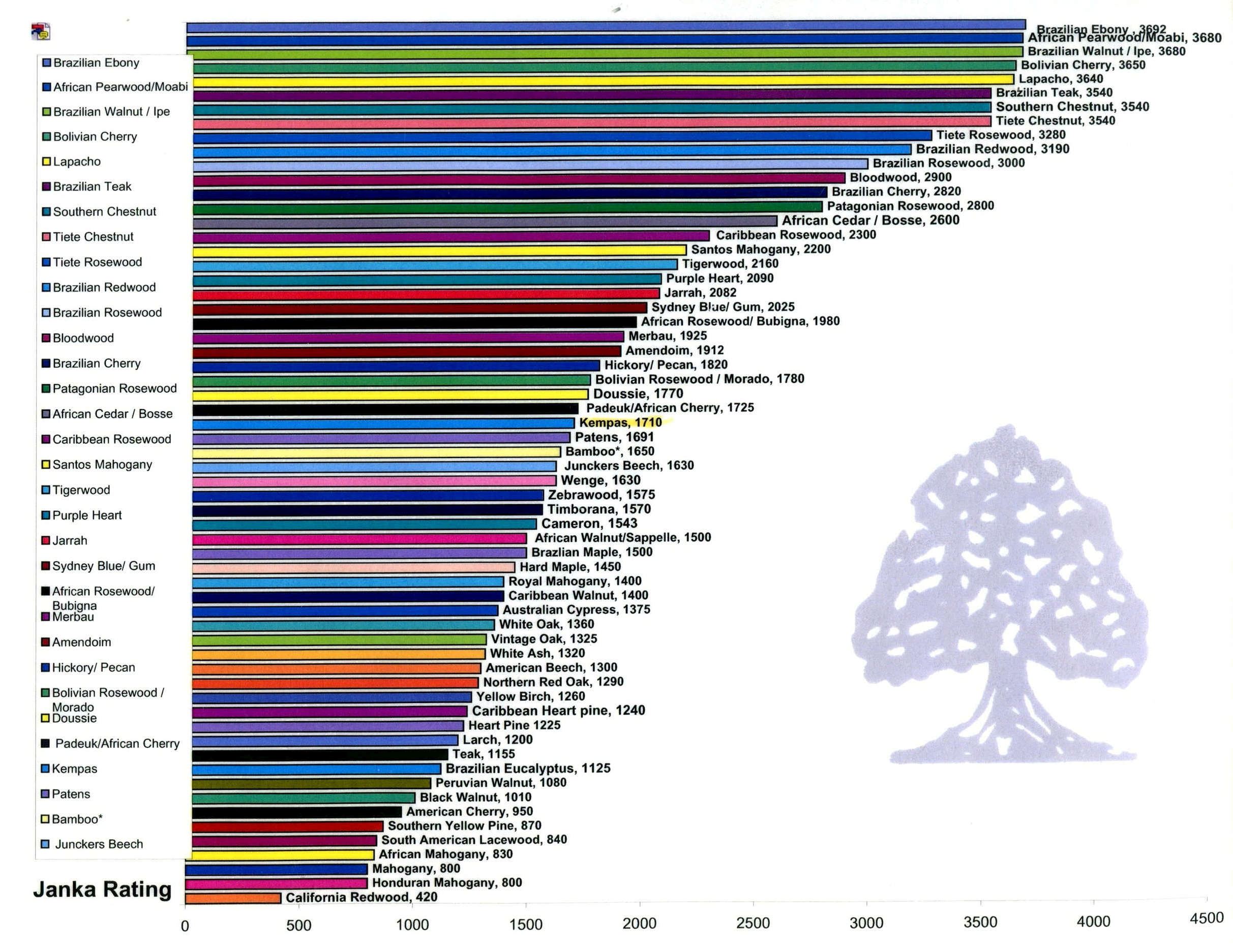
Janka Hardwood Scale
The Janka hardness scale measures the force that's required to embed a steel ball halfway through a sample of wood. The ball is 0.444 inches in diameter and fired with increasing force. The pounds of force (or newtons if you're using the metric system) needed to push the ball to the center is the Janka value you end up with.

How hard is hardwood? The Janka scale
The Janka scale, simply put, records the density of wood by testing its resistance to denting. The test measures the force required to embed a .444-inch (11.28mm) diameter steel ball halfway into a piece of wood. That force is recorded in pounds-force (lbf) in the U.S. or in kilograms-force (kgf) or newtons (N) in other parts of the world.